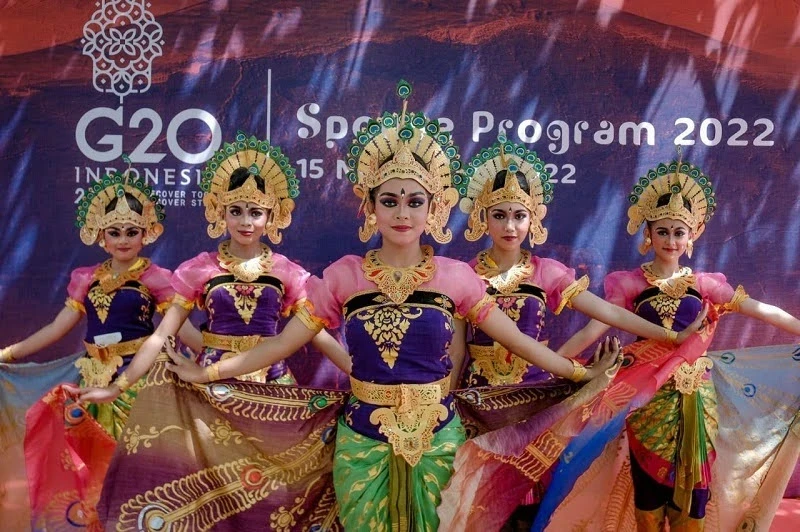
Indonesian culture is incredibly rich and diverse. This is reflected in many forms of art that have developed throughout the country, one of which is dance. Nearly every ethnic group in Indonesia has its own traditions, local music, and unique dances.
The vast diversity of traditional dances demonstrates the Indonesian people's commitment to preserving their local culture. Indonesians ensure that dance customs remain a part of daily life, as these traditions reflect the distinct culture, beliefs, and customs of each region.
The beauty and philosophy of regional dances are increasingly gaining worldwide attention. Cultural heritage, especially dance, is often influenced by history and events in specific areas, making most dances unique. Many regional dances have received numerous international awards.
For example, several traditional Indonesian dances, such as Merak, Pendet, and Tor-tor, enriched the cultural festivities at the 2022 G20 summit. Additionally, the Balinese ritual Kecak dance attracts hundreds of spectators daily at sunset.
Indonesia is home to about 3,000 traditional dances. Of the 671 recognized folk dances, 110 have been declared intangible cultural heritage by the Ministry of Education and Culture. Each regional dance has its own philosophy, background, and unique features. Of the many dances frequently performed at public events, only a few are widely known across the globe. Let's begin with Balinese dances.
Balinese Dances
Kecak Dance
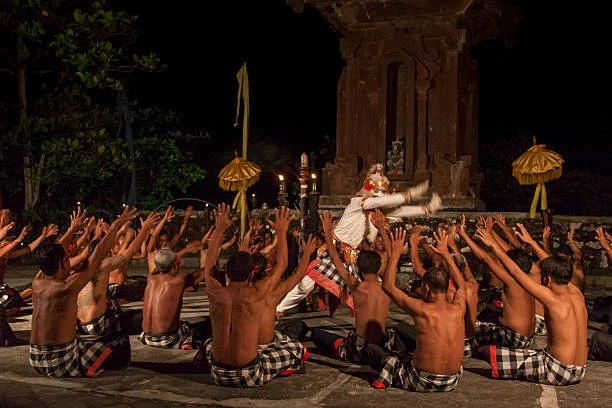
The first well-known Indonesian dance, Kecak, originates from Bali. In the 1930s, Balinese artist Wayan Limbak and German artist Walter Spies collaborated to create a performance filled with traditional Balinese rituals. The dance movements were adapted to the story of the Hindu epic Ramayana.
The Kecak dance was first performed in just a few villages, including the village of Bona in Gianyar. Later, it spread throughout Bali and became a regular feature at various festivals and events. The Kecak dance is performed by dozens of half-naked men sitting in a circle, wearing checkered cloth around their waists.
Barong Dance: The Battle Against Evil
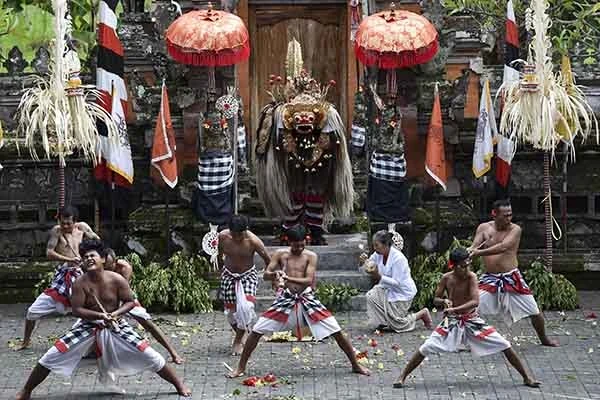
The Barong dance is a cultural depiction often associated with spirituality. It represents the classic battle between good and evil. In Balinese belief, Barong is a lion-like figure considered the king of spirits, symbolizing virtue and protection.
Legong Dance – A Work of Art
The Legong dance is an artistic dance that features graceful and flexible movements, popular throughout the history of Bali, the Island of the Gods. Traditionally, only the royal family could enjoy this dance in their palaces. However, over time, Legong became more accessible to the public, undergoing many modifications while preserving its characteristic fluidity and beauty.
The name "Legong" comes from the word "leg," meaning flexible movements, and "gong," referring to the gamelan musical instrument. The dance is performed with dynamic, structured movements to the rhythm of the gamelan. It is also a sacred performance often accompanying Hindu ceremonies in temples.
In June 2022, a creative dance titled Legong Suranadi was showcased at the 44th Bali Arts Festival in Badung's Jempening village, celebrating water as the source of life and emphasizing the preservation of Balinese culture.
Pendet Dance to the Sound of Gamelan
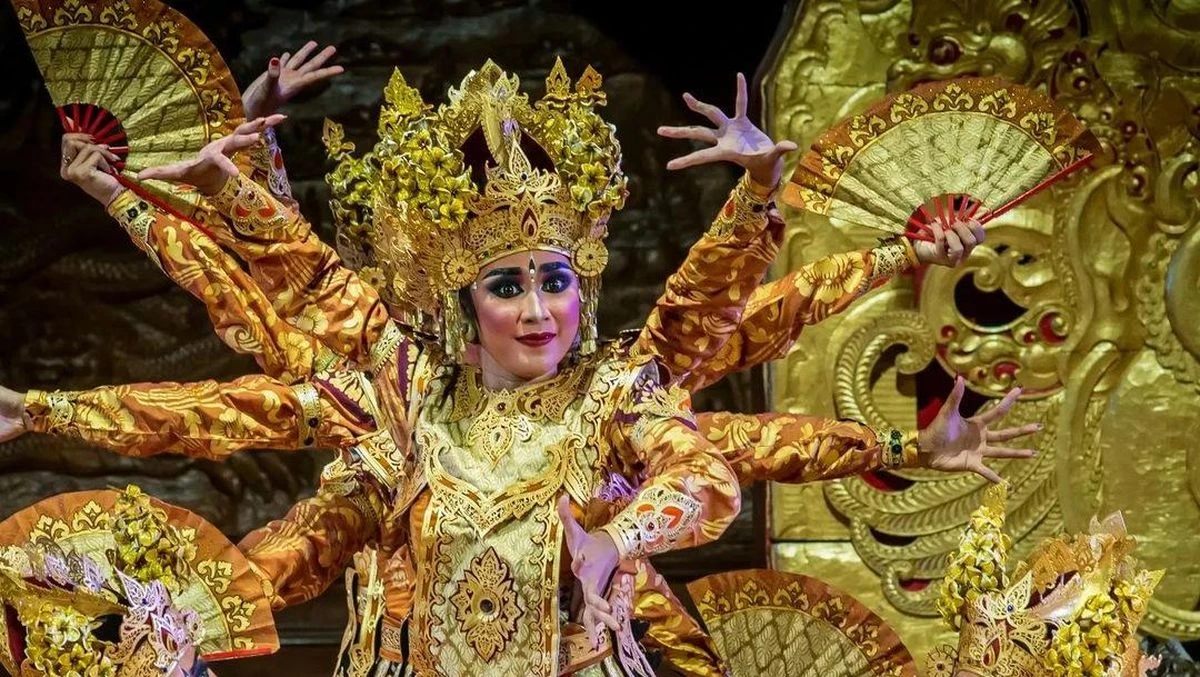
This traditional dance is often performed in temples and accompanied by gamelan music, showcasing the beauty of Balinese cultural expressions.
Pendet Dance
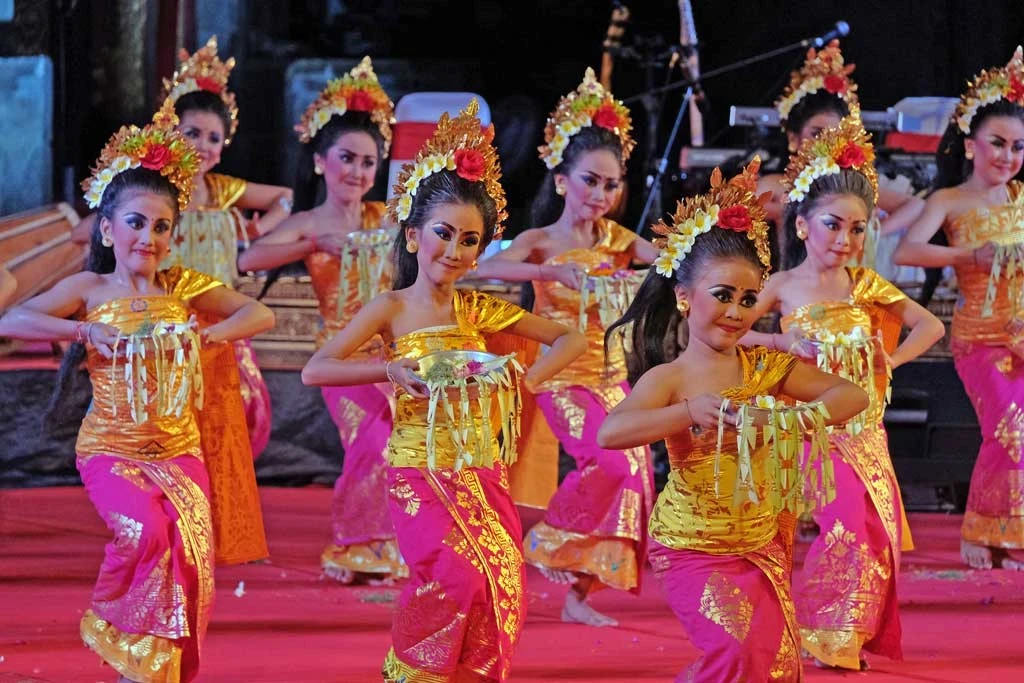
The Pendet dance was originally a ritual performed in temples during religious and cultural ceremonies. It was believed to symbolize the welcoming of the gods into the world. The dance has existed since the 1950s and was first performed as a prayer dance in temples. This form of dance is the result of a composition by the Balinese dance maestro I Wayan Rindi.
The movements of the dance are adapted from the traditional Pendet Dewa dance, which is performed as an offering. Without losing the religious and sacred value of this dance, I Wayan and his partner, Ni Ketut Reneng, managed to blend the elements of the Dewa dance into Pendet, making it a popular and still widely performed dance today.
One of the key features of the Pendet dance is that nearly every part of the dancer's body is involved in the movements. The dance is divided into seven types of movements: feet, hands, fingers, body, neck, eyes, and facial expressions. The dancer carries a small tray decorated with yellow coconut leaves and filled with vibrant flowers, which are later scattered over the audience. The rhythm of the dance is set by the Gamelan Gong Kebyar, with the accompanying music regulating the tempo and rhythm of the dancers.
Apart from the movements, the dancers' attire is also noteworthy, holding deep symbolic meaning. The dance expresses gratitude to the gods for their presence in the world and the desire to give humanity the best. The movements also symbolize joy in greeting guests at an event, with the scattering of flowers and coconut leaves symbolizing the preservation of good relations between the creator, humans, and nature. These meanings are conveyed through joyful dance movements accompanied by smiles.
Dances of Other Islands
Jepong Dance – A Highlight of Important Events
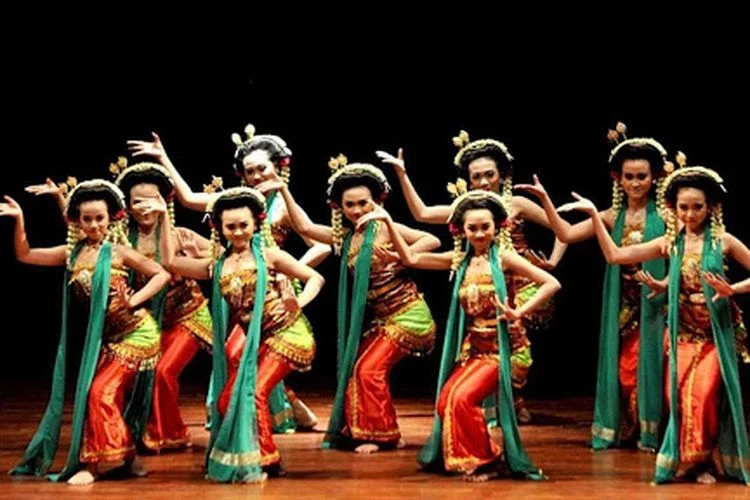
Jepong is a traditional dance that originated in Karawang, West Java. It features a modern blend of movements that incorporate elements of silat, wayang golek, and ketuk tilu, created by the artist Haji Suanda and composer Gugum Gumbira. The dance is performed to the sounds of various traditional instruments such as gongs, lutes, drums, and rebabs. Jepong often adorns major events and exhibitions, captivating local and international audiences eager to experience the richness of Indonesian culture.
Saman Dance from Aceh – The Jewel of Indonesia
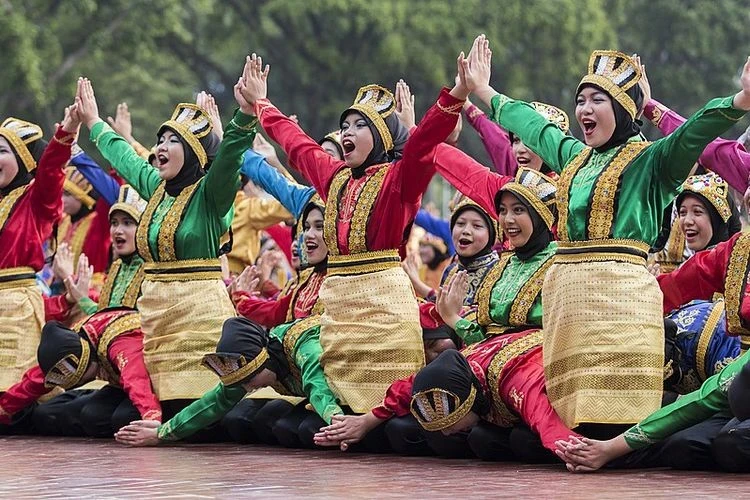
The Saman Dance, from the Gayo tribe in Southeast Aceh (Sumatra), is a true cultural gem of Indonesia. This extraordinary dance impresses not only with its energy but also with the absence of musical instruments. Instead, the rhythm is created by the dancers' voices, claps, and body slaps, forming a living symphony of movement and sound. Known for its complexity, the Saman Dance requires skill and concentration, making it a challenge for the performers.
Due to its cultural and artistic significance, the Saman Dance was inscribed on UNESCO's Representative List of the Intangible Cultural Heritage of Humanity in 2011, solidifying its status as one of the world's most important cultural treasures. The dance is performed in the Gayo language, and every movement has deep meaning and philosophy. The number of dancers is always odd, and it is often performed to celebrate the birth of the Prophet Muhammad.
The name "Saman" comes from one of Aceh's great scholars, Sheikh Saman. Some historical sources suggest that Sheikh Saman, a religious figure from the Gayo tribe in Southeast Aceh, was the one who founded the dance. Originally, he created this dance as a form of remembrance of Allah, as seen in the movements and postures. The Saman Dance is often used to convey messages, reflecting education, religion, Muslim prayers, manners, and heroism. These themes are expressed through the songs and verses in the dance, which carry the values of preaching and advice.
Reog Dance
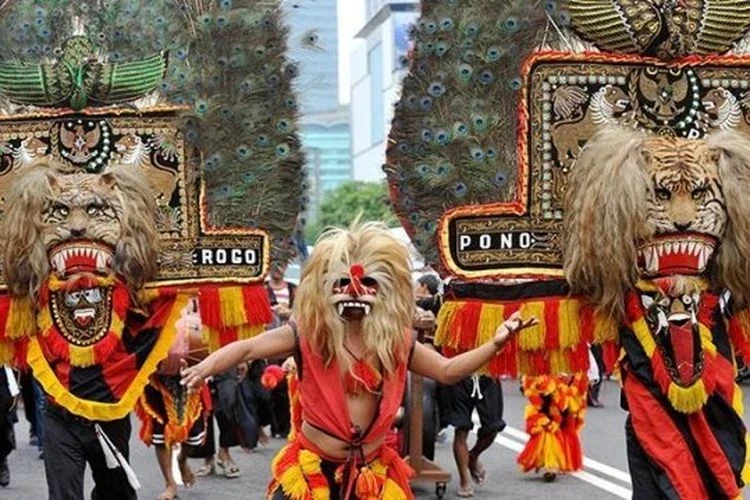
The Reog dance is a traditional art form filled with color and power, showcasing the enchanting beauty of performance art. The captivating performances of this dance always mesmerize the audience. Dancers wearing giant lion masks move energetically to the rhythm of drums and jidors, sparking curiosity and drawing the attention of those who appreciate the extraordinary.
The Reog dance is typically performed during weddings, circumcisions, and national celebrations. This art form from Ponorogo consists of several sequences. A distinguishing feature of the dance is the lion mask adorned with a crown of peacock feathers. Despite the mask weighing between 50-60 kg, the dancer holds it with their teeth.
Originating from East Java, the Reog dance has deep roots in Javanese cultural traditions. Its story is linked to the legendary figure of the Majapahit era, Dewi Songgolangit, who was said to possess extraordinary magical abilities.
There is a legend that Dewi Songgolangit enchanted Prince Kelana Sewandana, who wished to marry her. However, there was a condition to propose to the princess: the prince had to create a never-before-seen spectacle with 140 horses and a two-headed creature. With the help of the powerful sorcerer Ki Ageng Kutu, Kelana Sewandana succeeded in creating the Reog dance with the Singo Barong mask representing the two-headed creature.
Another version of the dance's origin suggests that Reog was created as a form of entertainment and support for soldiers during wartime. Initially, it served as a "remedy" for homesickness and a way to boost the warriors' morale. Over time, it gained profound cultural significance and became an integral part of life in East Java.
The Reog dance combines elements of mysticism, bravery, and the elegance of traditional art. Its spectacular performances continue to captivate audiences, and its cultural importance ensures that the Reog dance remains a living heritage of Indonesia, preserved and passed down through generations.
The dance became so valued that it even sparked a dispute, with Malaysia claiming it as their own. However, the disagreement has since faded, and the dance continues to be performed at major events.
Plate Dance – Piring
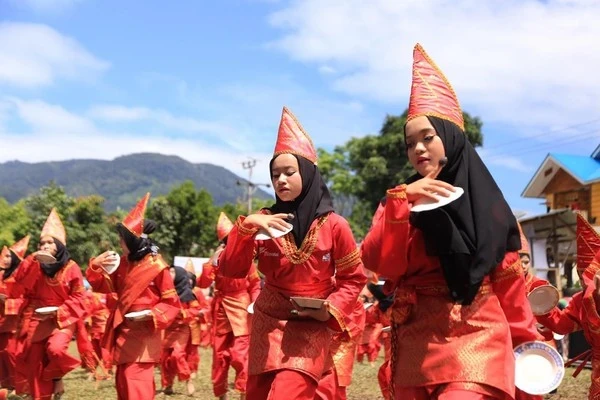
The Plate Dance is very popular in Indonesia, alongside other dances often used to promote Indonesian tourism and culture. Originating from the city of Solok in West Sumatra, this traditional art form from the Minangkabau people involves an odd number of dancers spinning plates in their hands with rapid movements, all while performing to the sounds of traditional instruments such as talempong and saluang.
The skillful performance of the Plate Dance often leaves viewers thinking that the plates are glued to the dancers' hands. Today, this dance is typically used to greet honored guests or to open traditional ceremonies.
Peacock Dance
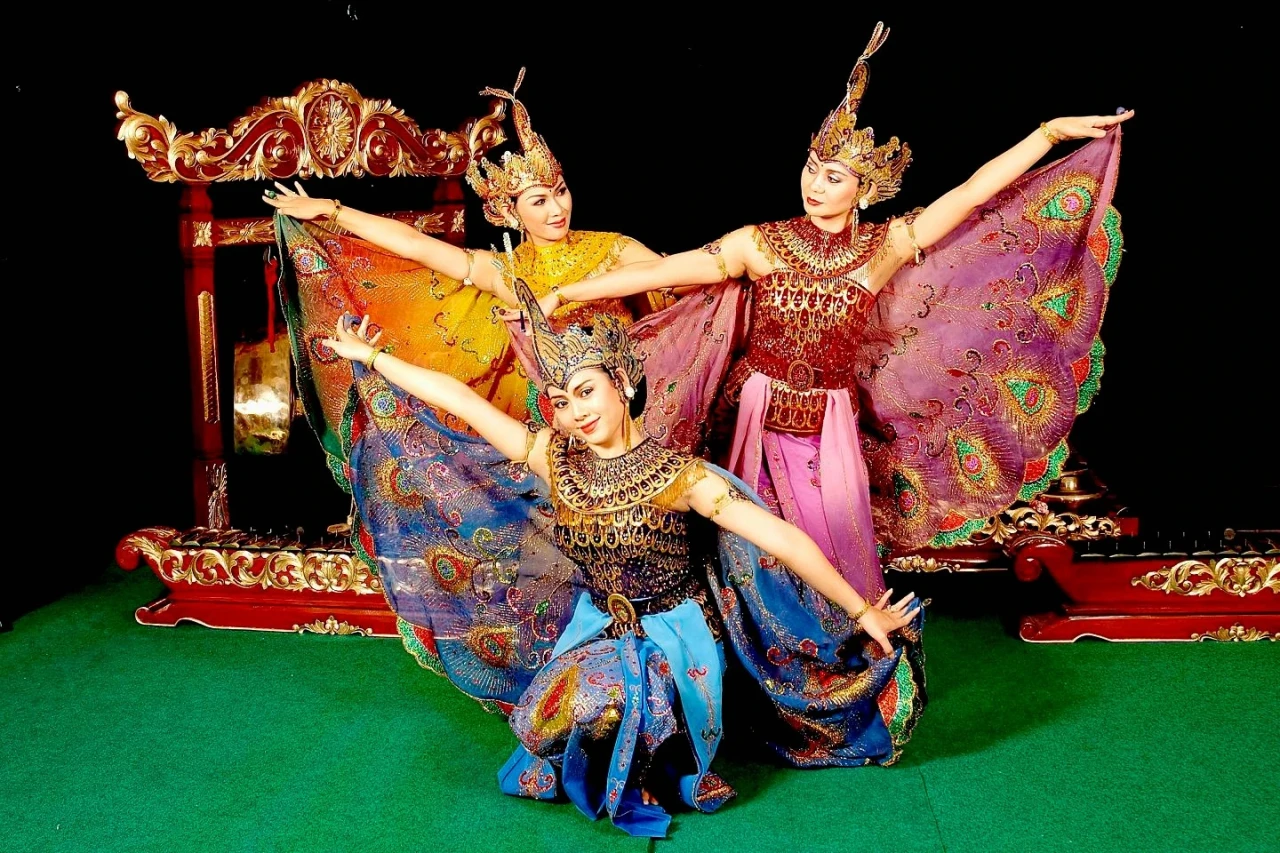
Another fascinating dance is the Peacock Dance from West Java. In this performance, a male peacock shows off his tail to attract a female, a theme conveyed through graceful and fluid movements that captivate the audience. The Peacock Dance is often performed at weddings to welcome the groom and at official events to greet distinguished guests. Created by artist Raden Tjetje Somantri for the entertainment of delegates at the Asian-African Conference in Bandung, the dance has since been performed numerous times at significant events.
After the creator's death, the dance was refined by his student Irawati Durban. It is performed by women in exotic costumes to the music of gendhing makan uluk. In 2020, the dance was designated as Indonesia's intangible cultural heritage and became a symbol of West Java.
Tor-Tor Dance
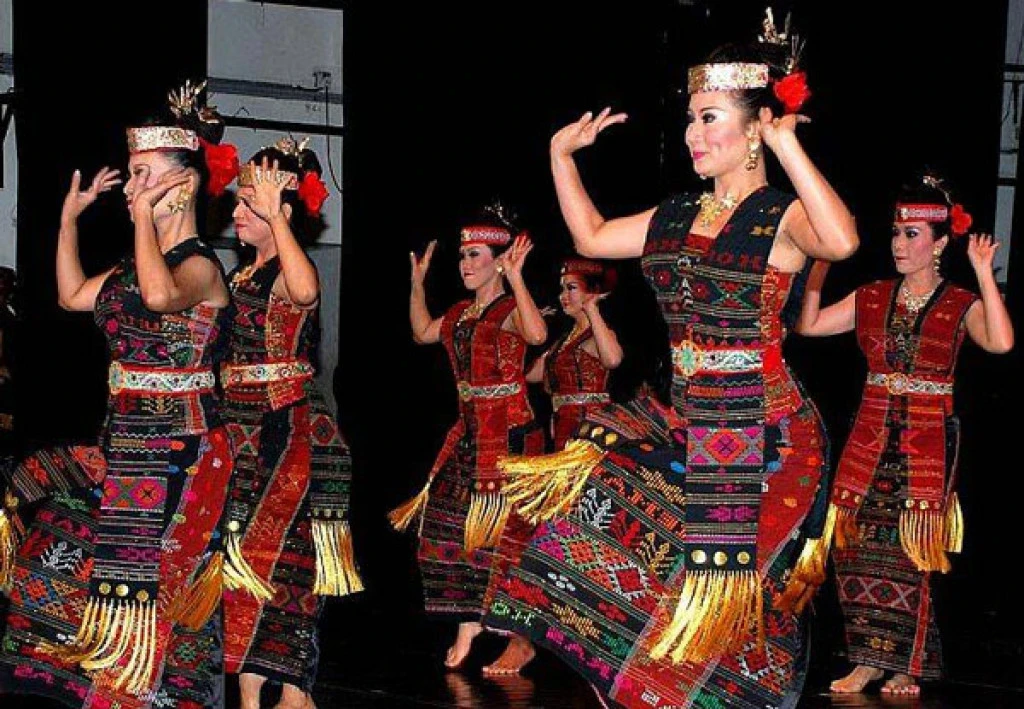
The Tor-Tor dance is a famous dance from the Batak region in North Sumatra. Originally, this dance accompanied traditional ceremonies of the Batak ethnic community. The name Tor-Tor comes from the sound made by the dancers' steps on the wooden floors of traditional Batak houses. During Dutch colonial times, the dance served as entertainment for the kings.
The uniqueness of the Tor-Tor dance lies in the fact that there is no designated dancer; instead, everyone joins in, making the event even livelier. At a traditional Toba Batak wedding ceremony, two groups line up: one group, hula-hula, stands on the right, while the other group, boru, stands on the left. Guests present at the event join in, dancing in several groups. Most of the dance movements involve a combination of hand and head movements.
According to local tradition, the Tor-Tor dance tells the story of the descent of seven heavenly daughters to Pusuk Buhit Mountain to bathe. The dance is also performed by shamans during ritual ceremonies after a village has been affected by a natural disaster.
Gambyong Dance
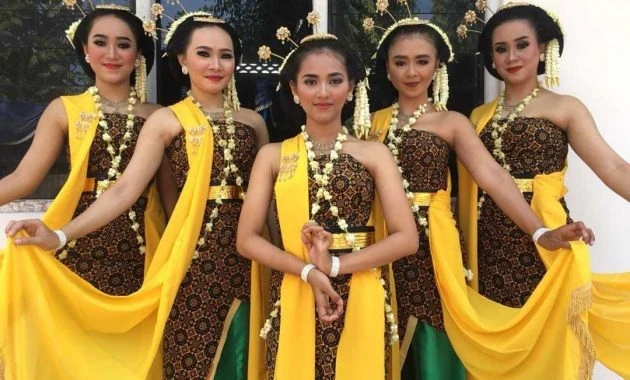
The Gambyong dance is one of the most famous traditional art forms from Central Java. It has survived to this day and remains a significant part of Javanese cultural art. Usually performed at traditional events and public cultural performances, this dance reflects the gentle and graceful nature of Javanese people.
Gambyong is considered a unique dance with its own characteristics. It is a form of classical Javanese dance originating from the Surakarta region. Historically, the Gambyong dance was an evolution of the tayub dance, often performed to welcome guests at public celebrations.
During the era of palaces and royal families in Surakarta, the Gambyong dance was often used as entertainment to greet honored guests during palace ceremonies. Over time, the dance evolved, transforming from a solo dance to one performed by three to five dancers. Today, Gambyong is a point of pride for the Javanese people, especially in Central Java, and it continues to be studied.
Public interest in Indonesian dance is growing rapidly, as seen in the emergence of dance studios and cultural performances at major events and festivals.
Sources: detik.com, gramedia.com.
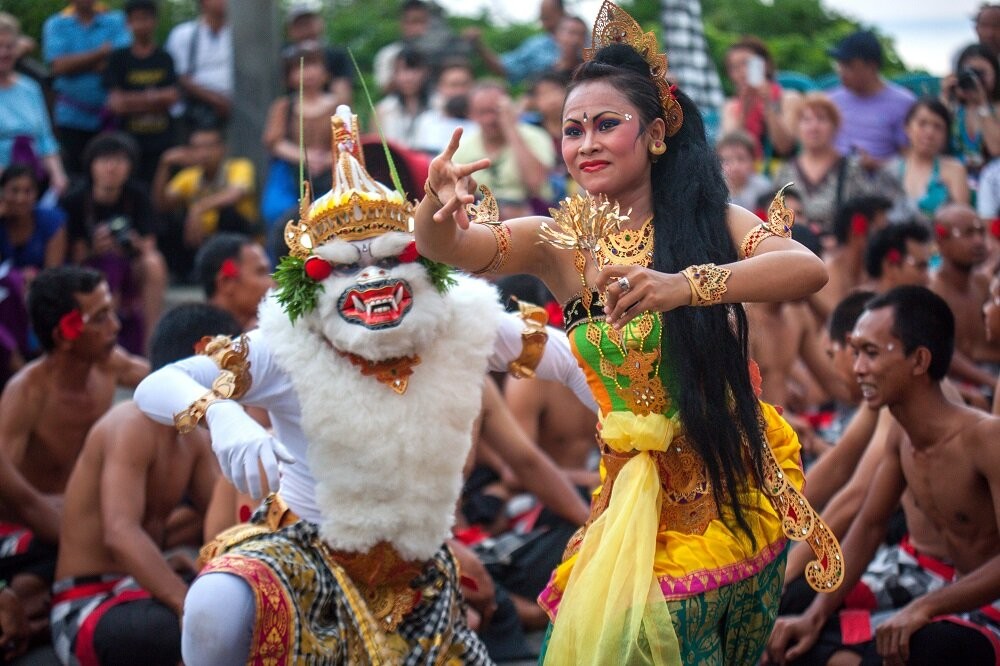
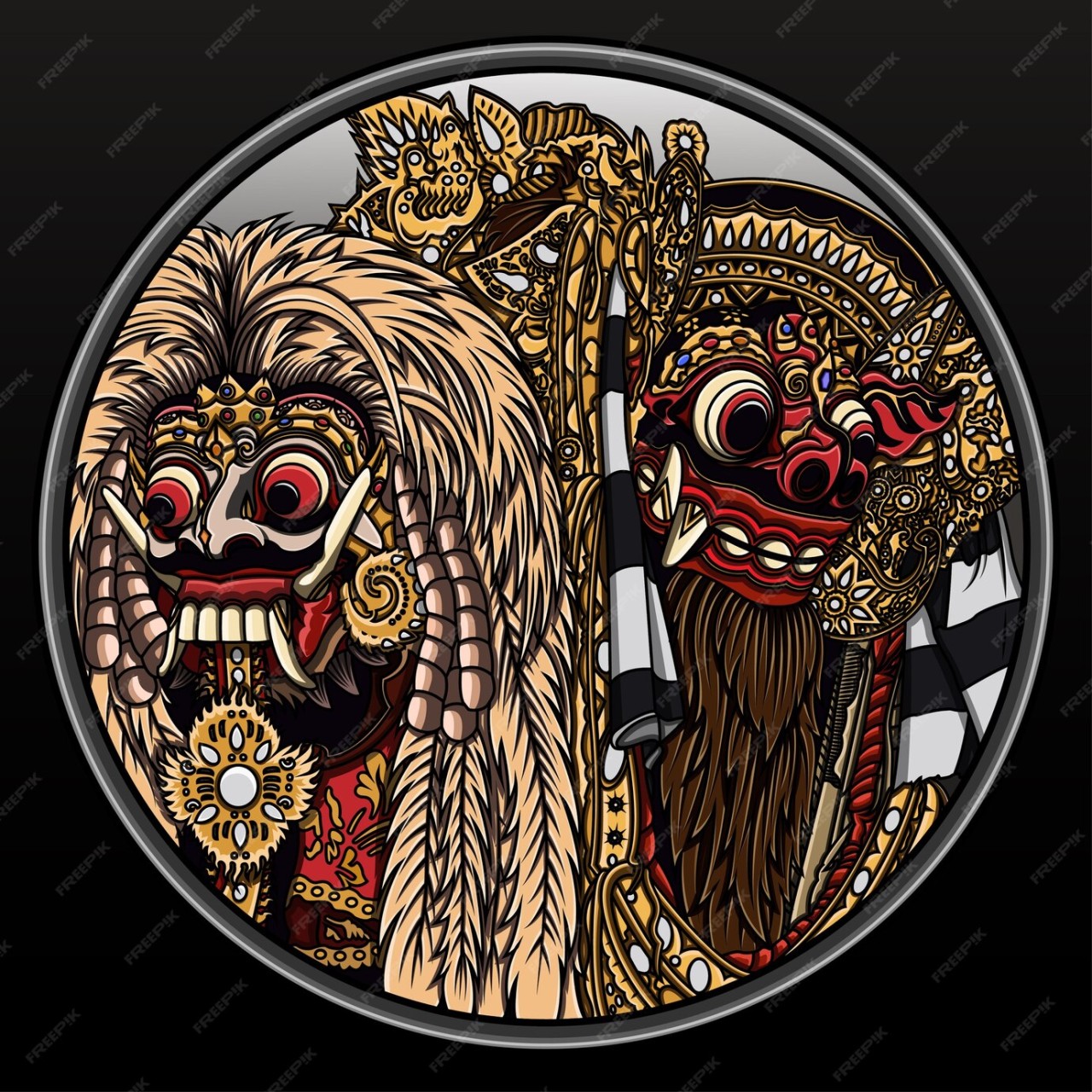
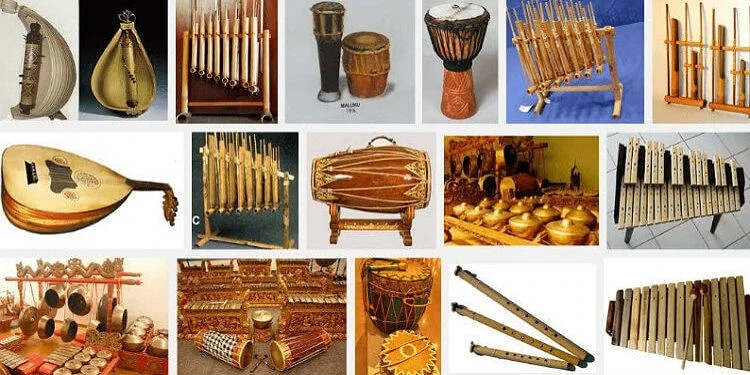
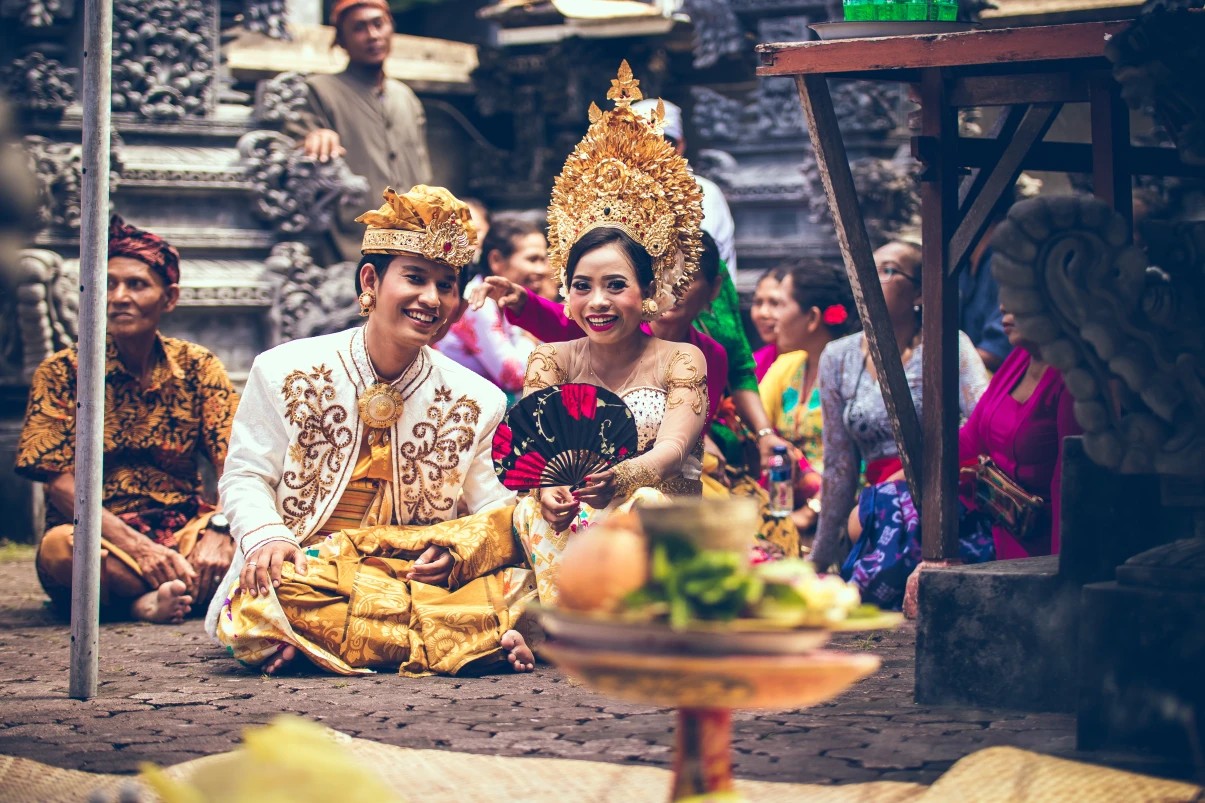
You can add one right now!